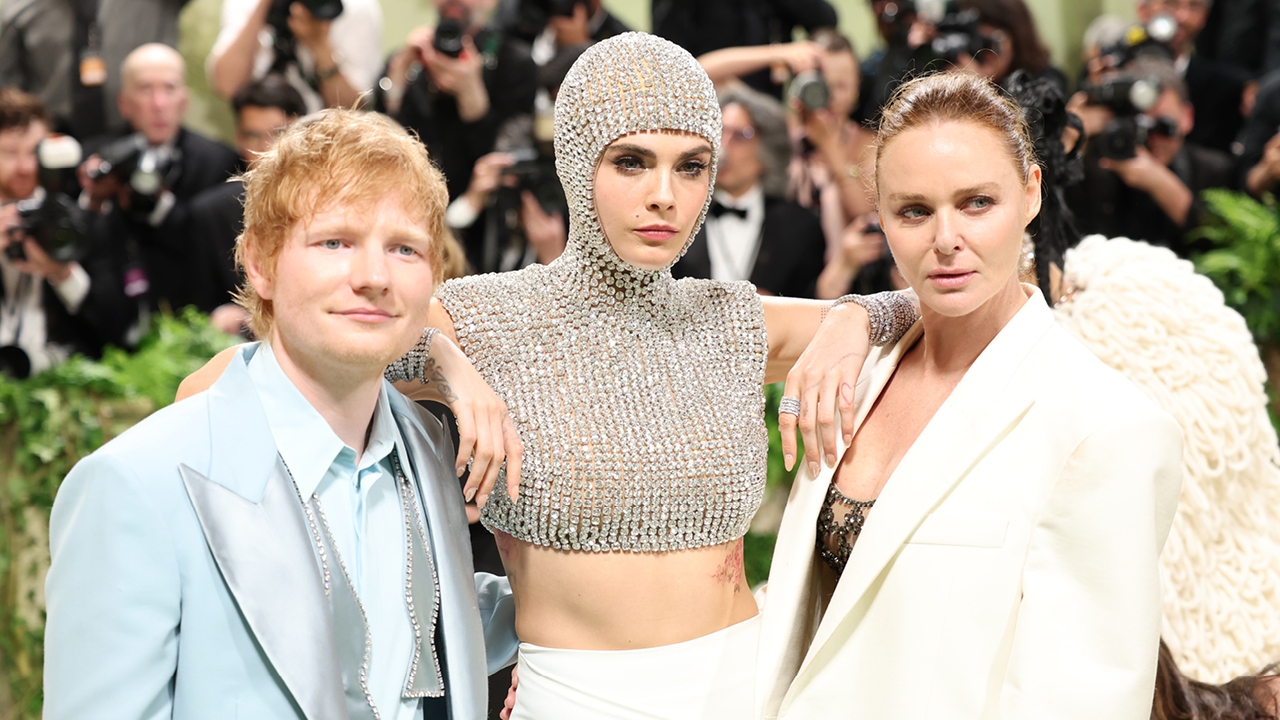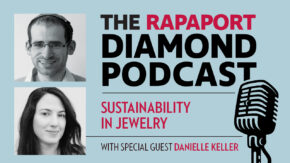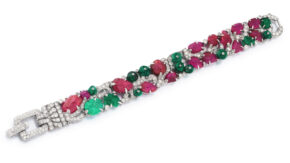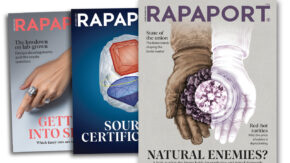A red-carpet event is always a glittering affair, but at this summer’s Met Gala, synthetic diamonds shared more of the spotlight with mined gemstones than ever before.
British designer Stella McCartney, an ethical-fashion pioneer, used the event to showcase a collaboration with Vrai, the consumer-facing jewelry brand from synthetic-diamond producer Diamond Foundry. Her celebrity guests, including actress Cara Delevingne and singers Ed Sheeran and FKA Twigs, sported custom Vrai creations. Delevingne wore a hooded bodice featuring over 500 carats of synthetic stones from Vrai’s zero-emissions foundry in Wenatchee, Washington.
Meanwhile, model Hari Nef and singer Lizzo attended the gala in eye-catching lab-grown jewels by London-based designer Anabela Chan, a favorite with Hollywood stylists. Actress and Pandora ambassador Pamela Anderson made her Met Gala debut in a necklace featuring almost 200 carats of the Danish jewelry brand’s pink and white synthetic diamonds.
“To be adorned in diamonds is opulent. And for these diamonds to be produced sustainably, it is innovative and exciting. So I get the best of both worlds,” Anderson told the assembled press.
A shift in strategy
Indeed, the Met Gala occurred just after Pandora revealed stronger-than-expected sales in the first quarter of 2024 thanks to high demand for its synthetic-diamond line, which totaled $9.1 million in sales — an 87% gain on a like-for-like basis.
“In just a few years, lab-grown diamonds have grown to 20% of the global $89 billion diamond-jewelry market, up from just 1% in 2015, and we are sure it will go much further,” says Mads Twomey-Madsen, Pandora’s senior vice president of sustainability and global communications. “This growth is largely driven
by rising consumer acceptance fueled by a growing focus on sustainability, and by more affordable retail prices.”
For comparison, Pandora’s flagship Infinite ring in 14-karat recycled gold with a round, 1-carat synthetic diamond retails at $1,950, whereas a mined diamond of the same size and cut can run from $2,500 to $18,000, depending on quality.

To capitalize on this shift, Pandora’s strategy has been to pivot from centering on its charm bracelets to gaining recognition “as a full jewelry brand,” reports Twomey-Madsen. “We have invested in several key initiatives, including expanding our product range, enhancing [our] store experience, increasing our presence at major global events [like The Met Gala], and collaborating with prominent talent.”
Vrai has adopted a similar approach to marketing its synthetic gems, albeit to a higher-spending consumer.
“The definition of luxury has changed,” says company president and CEO Mona Akhavi. “It’s [now] about the impact of the purchase on people and the planet, its meaning, and how it’s created.”
Since its founding in 2014 as a fully integrated, digital-first brand, Vrai has opened nine boutiques worldwide — including five in the US — to better serve luxury clients who still value a physical retail experience. Vrai has seen “exponential” sales growth in pieces featuring larger-carat stones, according to Akhavi, who notes a particular uptick in purchases over 4 carats. “Customers learn they can purchase a larger-carat Vrai-created diamond with no [environmental] compromise.”
‘You’re not selling something precious’
The ability to offer a more innovative design approach than traditional diamond jewelers is another opportunity for growth, Akhavi believes. In 2018, for example, Vrai recruited Jony Ive, who was creative director of Apple at the time, to design a diamond ring carved entirely from a single lab-grown stone. The finished product sold at Sotheby’s for $256,250, benefiting AIDS charity Red. More recently, Vrai has crafted avant-garde collections for haute fashion labels like Givenchy and Balmain, as well as Stella McCartney.
The jeweler has also launched a bespoke-diamond service called Cut for You, in which clients choose the cut and size of the synthetic diamond they want, and Vrai creates it for them from rough in just 15 days. “Demand and orders have more than doubled in the last six months for this offering,” Akhavi reports, adding that the average order is for stones over 3 carats.
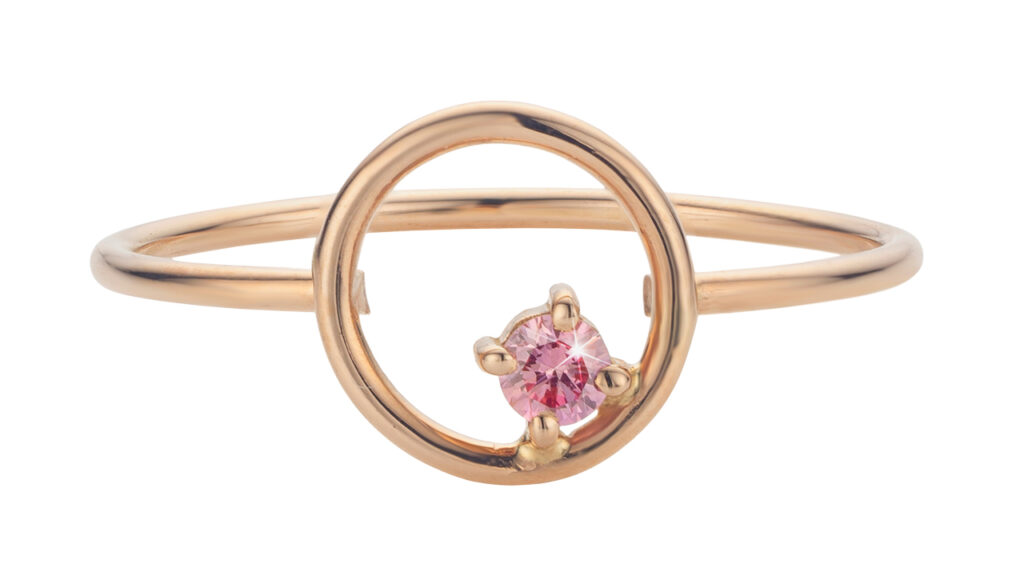
“The strategy for lab-grown diamonds has to be very different if you’re aiming for success or longevity,” affirms Priyanka Mehta, founder and designer of Nue Fine Jewelry. “You’re not selling something precious; you’re selling something ethical with the potential for incredible creativity. That’s the best thing about lab-grown diamonds: Creativity isn’t cost-prohibitive.”
Among other things, Nue’s fashion-forward, stackable pieces have featured in Netflix series Emily in Paris.
“Very few [lab-grown brands] will survive by making tennis bracelets and studs, because the margins will keep decreasing,” states Mehta. “We need to exercise our ability to think outside the box in terms of shapes, uses and overall look.”
From A to Z
Two synthetic-diamond growers are aiming to do just that.
New York-based brand J’evar, an offshoot of lab-grown specialist Altr, is launching Type — a collection of diamonds shaped like the 26 letters of the alphabet. Each letter is hand-cut from a single rough and is available in either 7 or 9.5 millimeters, with the latter retailing for around $8,000. J’evar grows its diamonds from seeds that originated in India’s famous but now depleted Golconda mines, so the resulting stones are genetically identical to diamonds that are now impossible to source in the wild. Clients range from teenagers to octogenarians.
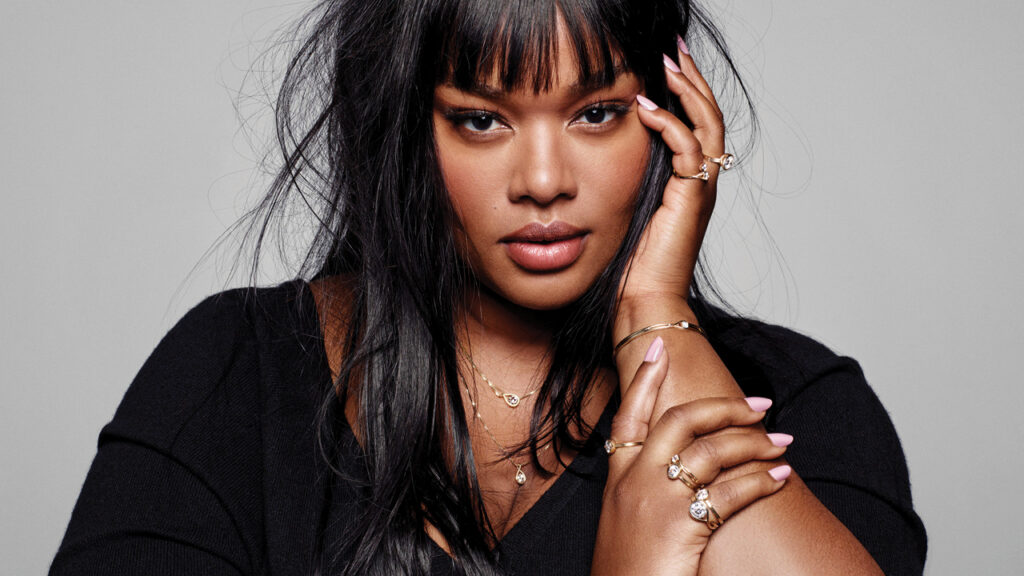
Meanwhile, Skydiamond, which creates carbon-negative stones at its green-powered facility in the British countryside, is looking to produce diamonds in hues and sizes almost unattainable in nature. It recently grew a vivid-blue stone weighing 5 carats, and smaller stones with a metallic luster it calls “molten silver.”
“Eventually, by manipulating the spectrum of light reflected back by our stones — which we can do, as we control the entire end-to-end process — we hope to be able to offer stones in colors totally unique to us,” says CEO Madeleine Macey. “In theory, ombré-colored diamonds of perfect quality could be made to order.”
Main Image: Ed Sheeran and Cara Delevigne pictured with Stella McCartney at the 2024 Met Gala wearing outfits accented with Vrai synthetic diamonds. (Vrai/Getty Images)
This article is from the October-November 2024 issue of Rapaport Magazine. View other articles here.
Stay up to date by signing up for our diamond and jewelry industry news and analysis.
